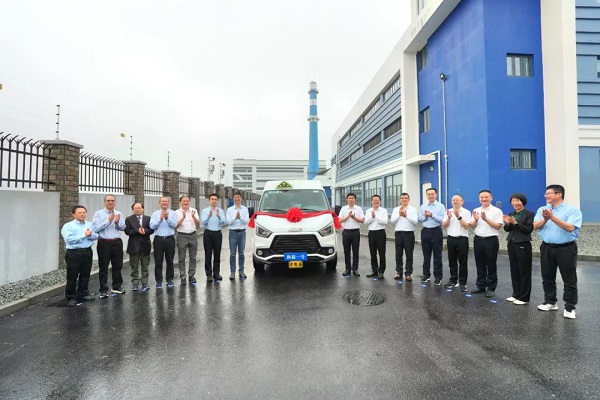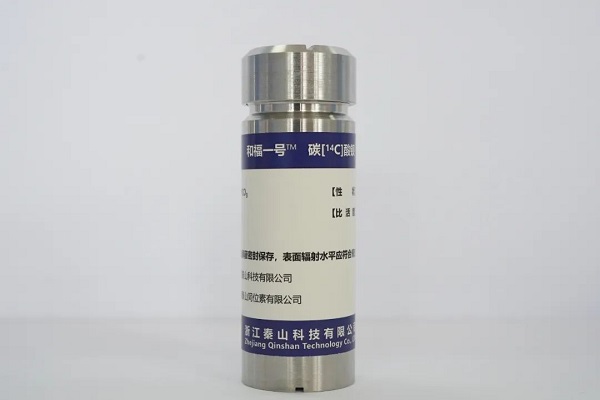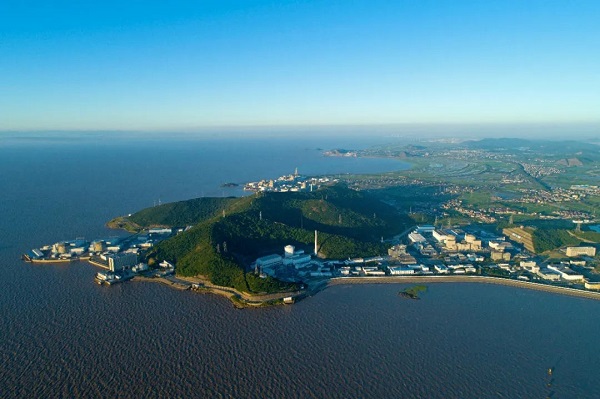On May 16, China's first batch of commercial reactor Carbon-14 isotope was officially dispatched from the Qinshan Nuclear Power Base, operated by China National Nuclear Corporation (CNNC). This marks the first mass production achievement under "He Fu No.1", China's first isotope production technology brand, and signifies the establishment of China's fully integrated industrial chain for Carbon-14 isotope development, from independent R&D and production to commercial supply.
Demonstrating the independent, large-scale and branded advantages of this technology production system, this milestone reflects CNNC's commitment to leveraging its innovation to enhance public health and opens a new chapter in the development of China's isotope industry.

"He Fu No.1" is a technological innovation achievement of China's nuclear industry, symbolizing the harmonious coexistence between nuclear energy and nature. During the launch ceremony for the Carbon-14 isotope, Qinshan Nuclear Power highlighted that the localization and mass production of Carbon-14 fully demonstrate CNNC's independent innovation capabilities and strength in integrating the industrial chain within the field of nuclear technology applications. This marks a new stage in China's isotope supply system — shifting toward greater self-reliance and innovation. Looking ahead, CNNC will continue to leverage its resources and technological advantages to accelerate the localization and scaled production of more medical isotopes, contributing to the Healthy China initiative.

Carbon-14 is an essential radioactive isotope widely used in Helicobacter pylori testing, new drug development, and environmental monitoring. However, only a handful of countries in the world possess the technology for its large-scale production. Under the support of the China Atomic Energy Authority, Qinshan Nuclear Power, relying on China's commercial heavy water reactor, began independent R&D in 2019 through joint efforts with China Isotope & Radiation Corporation and other partners, and successfully overcame technical barriers to produce Carbon-14 through commercial reactor irradiation.
In April 2024, the irradiated Carbon-14 target components were successfully extracted from the heavy water reactor. After purification and processing, the first batch of Carbon-14 products meeting quality standards passed final testing. The expected annual output is sufficient to meet domestic market demand. This achievement is set to strongly boost the development of China’s isotope application industry chain, provide robust support for nuclear medicine R&D, and lay a solid foundation for the broader growth of the country's nuclear technology application sector.

As the birthplace of China's nuclear power industry, Qinshan Nuclear Power has been at the forefront of advancing diversified applications of nuclear energy. Currently, the Cobalt-60 produced at Qinshan Nuclear Power Base is used in a wide range of fields, including food preservation, meeting most of the domestic market demand and even starting export. Looking ahead, "He Fu No.1" will take on the task of scaling up production of various short half-life medical isotopes, such as Lutetium-177, with production capacity expected to meet domestic needs.

The continued advancement of isotope localization and commercialization at Qinshan Nuclear Power will drive the high-quality development of China's nuclear medicine industry and promote coordinated growth across the national isotope industry chain. Currently, the industrial park of isotope in Haiyan county, Zhejiang province, has attracted 26 related projects, with a total investment exceeding 9 billion yuan ($1.2 billion). Once fully operational, the park is expected to generate an annual output value of over 20 billion yuan ($2.7 billion).